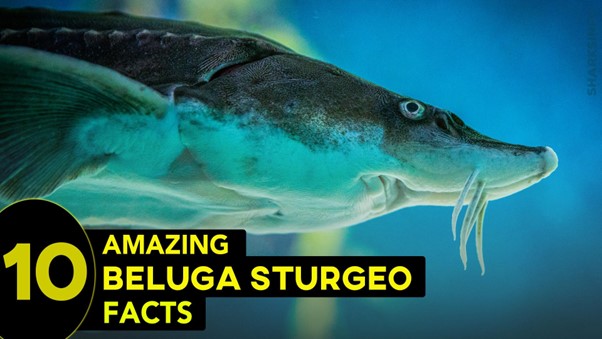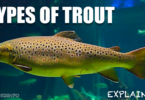Beluga sturgeons are among the largest bony fish found in freshwater. Huso huso is a member of the sturgeon family Acipenseridae, which includes 29 species of fish. The fish’s name is taken from the German word for skull because they have a huge armored head. The fossil records of Beluga sturgeons suggest that they arrived on Earth around 174 million years ago, in the middle of the Jurassic period. There’s a lot more to the fish that needs to be explained.
10 Interesting Beluga Sturgeon Facts
Fact #1: Evolution
Beluga sturgeons are thought to have evolved from a group of fishes known as Palaeonisciforms, which existed around 419 million years ago.
Fact #2: Feeding Habits
Beluga sturgeons are bottom dwellers that like muddy, sandy, and gravelly floors and dig up buried prey with their blunt snouts. Furthermore, they suck the floating particles in the water, releasing the water or debris through their gills and digesting it. Freshwater mussels, macroinvertebrates, shrimp, tiny fishes, worms, clams, worms, crustaceans, and snails are among the food items. Surprisingly, they graze on fresh food and shun dead or rotting items.

Fact #3: Origin of Name
The names beluga sturgeon and Arctic beluga whale are derived from the Russian word Belaya, which means white. Surprisingly, this is also the root of the country name Belarus, which literally means “White Rus” (Russia). The species is sometimes known as the giant sturgeon.
Fact #4: Consumed as Food
One of the more intriguing facts is that the beluga sturgeon has been hunted as a food source for the quality of its eggs since at least 1,100 BC. Roe is a broad name for any type of fish egg. Caviar, on the other hand, refers to the internal eggs of any sturgeon species found in the Caspian and Black Seas.
Fact #5: Not Dangerous to Humans
Beluga sturgeons, despite their size, are not very aggressive or harmful. They are designed to consume tiny to medium-sized fish rather than larger creatures such as humans. If they are assaulted, belugas may try to defend themselves, but generally, they will keep to themselves.
Fact #6: Reproduction
The Beluga sturgeon spawning season lasts from May through June. The species exhibits migratory activity in order to find a mate for reproduction. After roughly 15 months of incubation, the female fish lays hundreds of eggs, which hatch and give birth to offspring. Males reach sexual maturity at the age of 15 and live for 65 to 90 years, but females reach sexual maturity at the age of 25 and live for 150 years or more.
Fact #7: Habitat
During the summer, Beluga sturgeons prefer warm and shallow waters. They can take a 1000-meter dive and live in extreme depth for roughly 25 minutes. Surprisingly, they can live in the cold environments of the Arctic and Subarctic. They are also found in the seas and oceans for feeding purposes, depending on the season.
Fact #8: Physical Features
Beluga sturgeons are steel blue to greyish black on the outside and pale on the inside. They have a long head with a mouth that extends evenly down the length of the head and is covered with fringed barbels.
Because of its substantially higher growth rate, the species can reach incredible lengths. These species can grow to be 7.2 meters long and weigh approximately 1,476 kilograms on average. However, the largest Beluga sturgeon ever caught was nearly 10 meters and weighed 2,000 kilograms.
Fact #9: Conservation status
Because it is one of the most popular commercial fish, the population of Beluga sturgeons in the ocean has been rapidly dropping due to overfishing and other human activities. The International Union for the Conservation of Nature classified Beluga Sturgeons as Critically Endangered.
Fact #10: Threats and Dangers
Because of their gigantic size and “plated” skin, Beluga Sturgeons are largely impervious to assaults from other animals. Humans, unfortunately, pose a considerable threat through both fishing and habitat modification.
The Bottom Line
Beluga sturgeons have been living in ocean water for around 174 million years and have a worldwide distribution, however, they are most typically found in the Caspian and Black Seas. These species are distinguished by their long, pointed beaks, which aid in the detection of buried prey. They are, however, commercially highly important to fisheries, which is why the population is rapidly dropping, and the IUCN has listed them as a Critically Endangered species.







